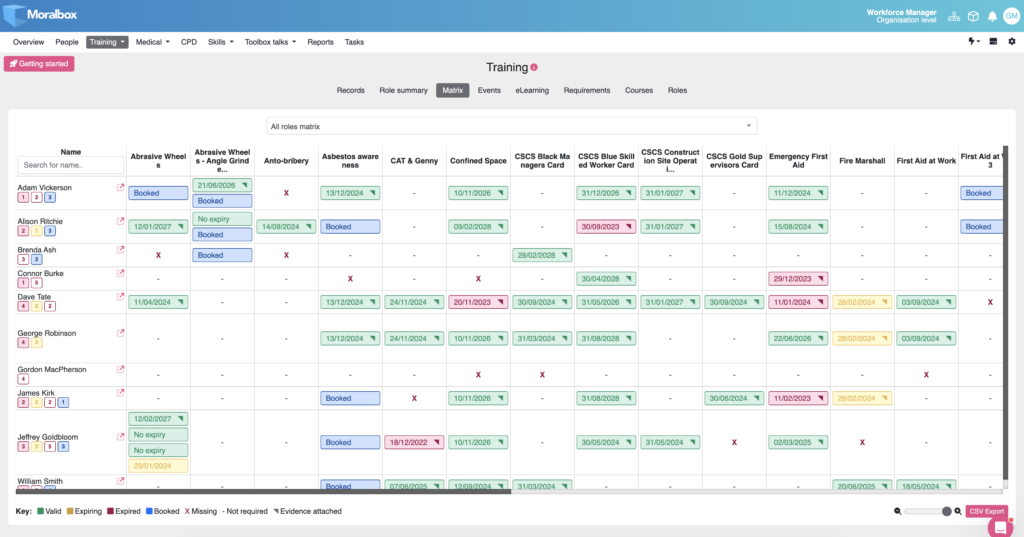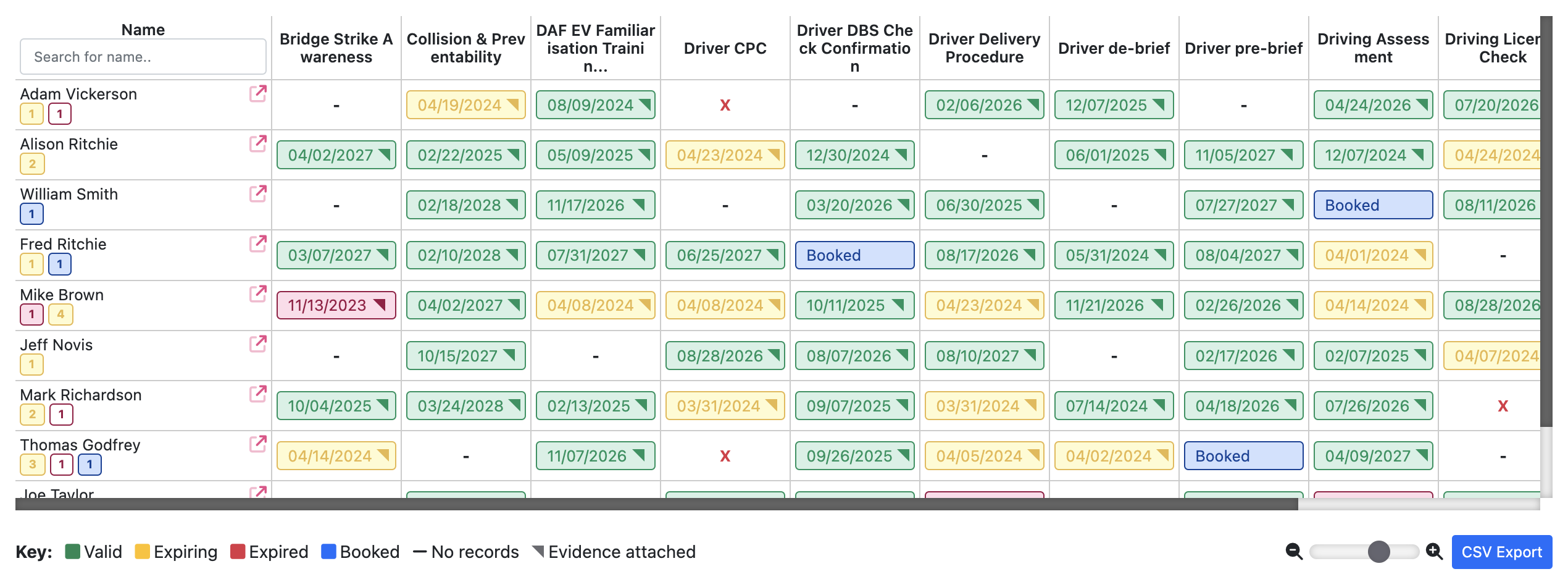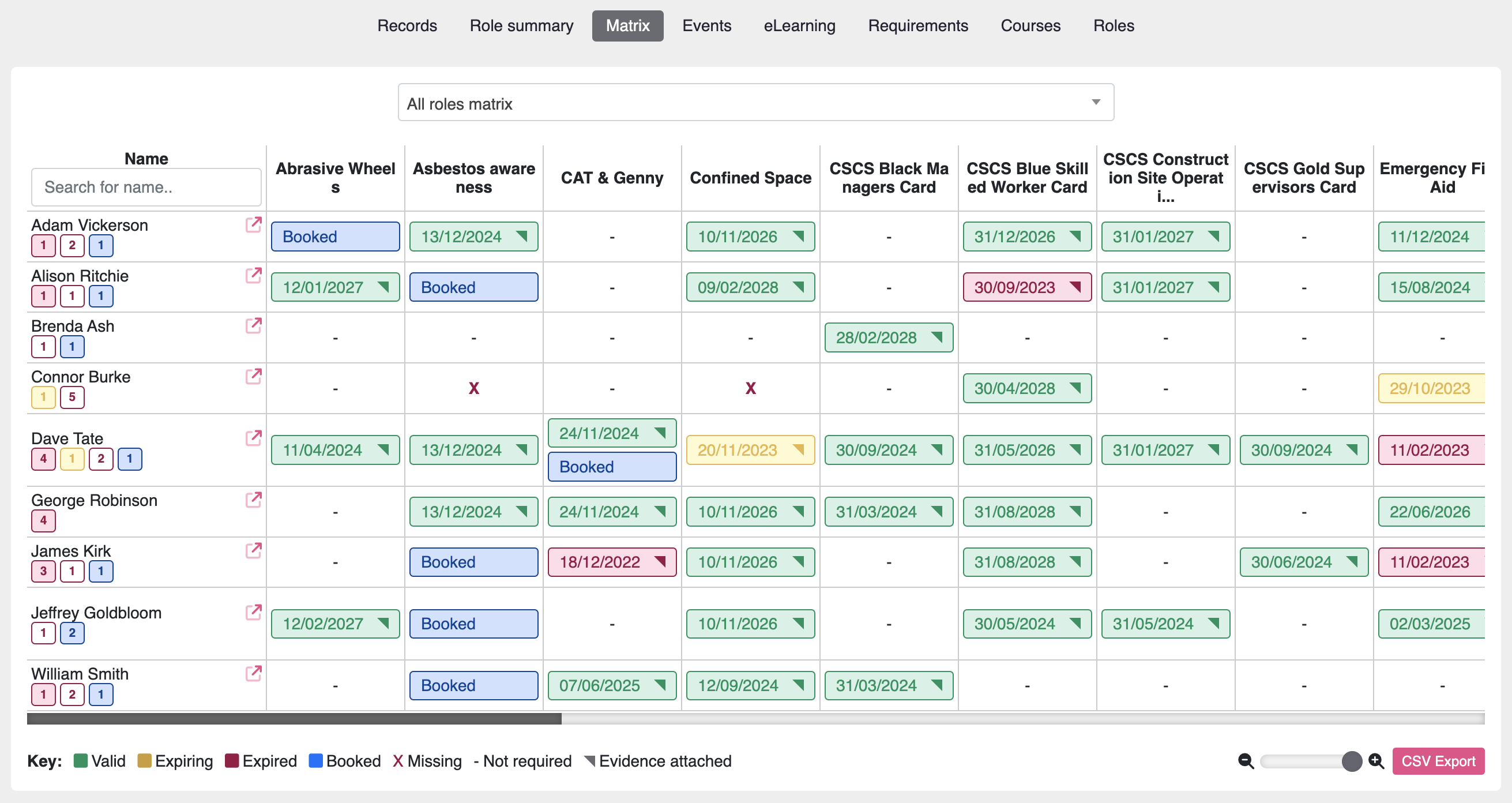In today’s competitive business landscape, the strategic development of your team’s competencies is crucial for success. A Competency Matrix, a pivotal tool in understanding and improving team capabilities, serves as a roadmap for this purpose.
Understanding the Competency Matrix
A Competency Matrix is essentially a table that maps out the specific skills, knowledge, and behaviours required for different roles within an organisation against the current competencies of team members. It helps in identifying both strengths and areas for development.
Traditionally a competency matrix is created using spreadsheet software like Excel, however competency matrix software is also very popular and makes the process easier, saves time and and is less susceptible to human-error.

The Purpose of a Competency Matrix
The primary goal of a Competency Matrix is to provide a clear picture of the competencies available within the team and to identify where gaps might exist. This insight is invaluable for both individual and organizational growth.
For Team Members
For individuals within the team, the matrix serves as a guide to understanding the expectations of their roles and the areas they need to develop to advance in their careers.
For Managers
For managers, the matrix offers a detailed overview of the team’s capabilities, aiding in efficient task allocation, identifying training needs, and planning for future recruitment.
Building a Competency Matrix
Creating a your matrix involves several key steps:
- Identifying Key Competencies: Start by defining the essential skills and knowledge required for each role within your organization.
- Assessment: Evaluate each team member against these competencies, typically on a scale (e.g., beginner to expert).
- Analysis: Use the matrix to identify skill gaps and areas where your team excels.
- Action: Develop targeted training and development plans to address the identified gaps.
The Benefits of a Competency Matrix
Implementing a Competency Matrix within your organization can lead to numerous benefits, including:
- Improved Performance: By aligning team members’ competencies with their roles, you enhance overall performance.
- Focused Training: The matrix helps pinpoint specific training needs, making professional development efforts more targeted and effective.
- Better Resource Allocation: Understanding the strengths of your team allows for smarter task allocation.
- Career Development: A clear competency framework supports career progression, motivating team members.
- Strategic Workforce Planning: The matrix aids in planning for future talent needs, ensuring your team remains competitive.
Conclusion
A Competency Matrix is not just a tool for measuring current capabilities; it’s a dynamic framework that supports the continuous growth and development of your team. By effectively implementing and utilizing a Competency Matrix, you can unlock the full potential of your workforce, driving your organization towards its strategic goals.
Further Reading
For an in-depth understanding of Competency Matrices and their implementation, two resources stand out:
Valamis provides a comprehensive guide on the importance of skills matrices and the distinction between skills and competency matrices. A competency matrix not only includes the evaluation of employee skills but also encompasses knowledge and attitudes, making it a more comprehensive tool for management to understand the available knowledge within the company, identify gaps, and plan accordingly. The benefits of creating a skills matrix as highlighted by Valamis include identifying the right personnel for specific tasks, recognizing missing competencies within teams or the entire company, and aiding in effective HR planning for new hires or future skill requirements.
Kenjo, on the other hand, delves into the practical application of a Skill Matrix, emphasising its role in performance management and team optimisation. By mapping out the required and available skills for a project or team, a Skill Matrix helps in balancing team performance and fostering the development of skills. It’s particularly useful for aligning employees’ abilities with the company’s objectives, ensuring the optimal distribution of internal talent, and improving both internal and external customer service. The guide also offers steps to create a Skill Matrix, including downloading and customizing a template, and identifying potentials and synergies within teams.
Both resources provide valuable insights into how competency and skill matrices can serve as essential tools for HR professionals and team leaders, helping to maximize team efficiencies and align employee development with organisational goals. For more detailed information and practical guides on creating and utilising these matrices, you can visit the Valamis and Kenjo websites.
John is our co-founder and is responsible for software design and development and loves helping people solve problems using innovative software.


